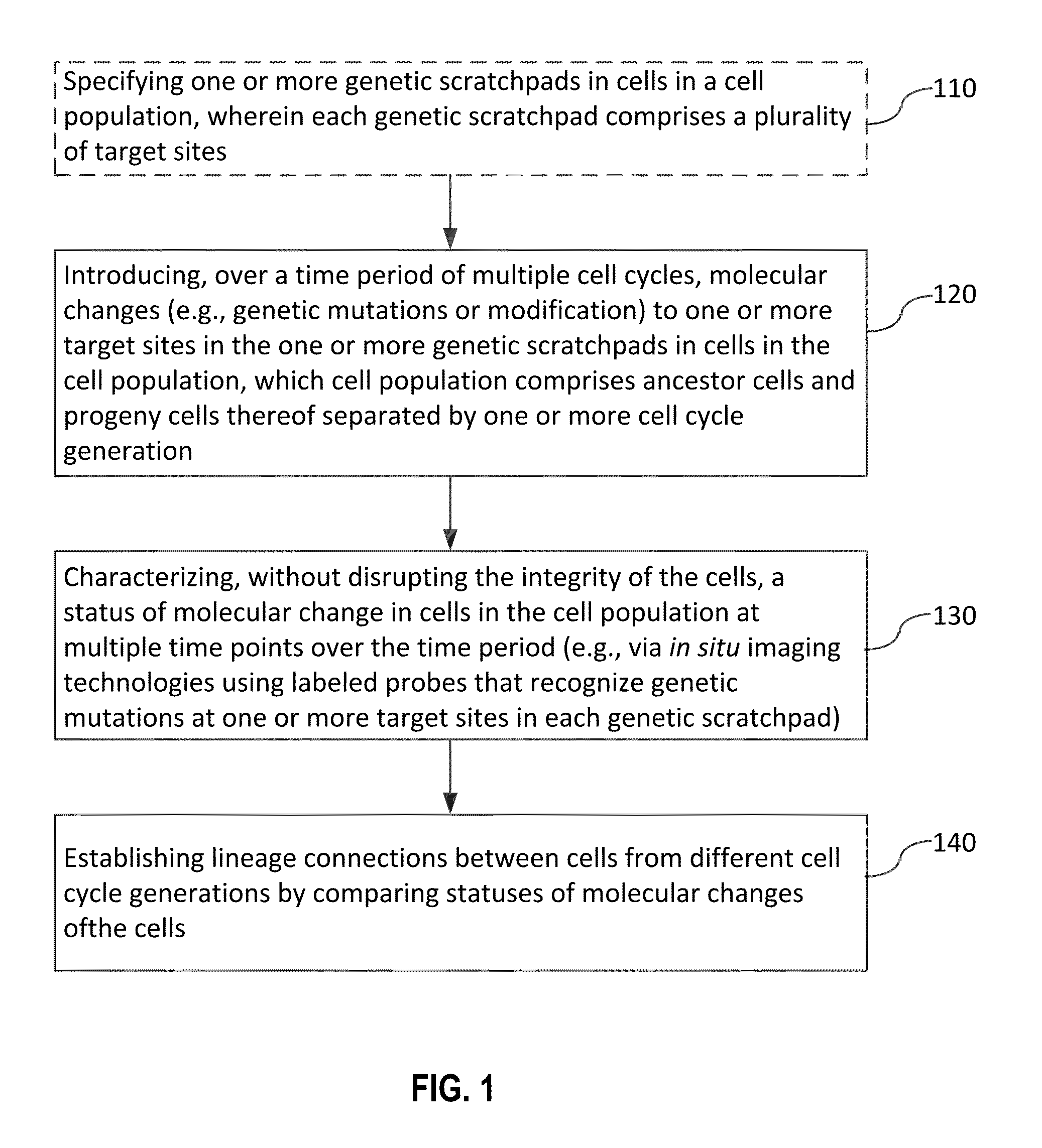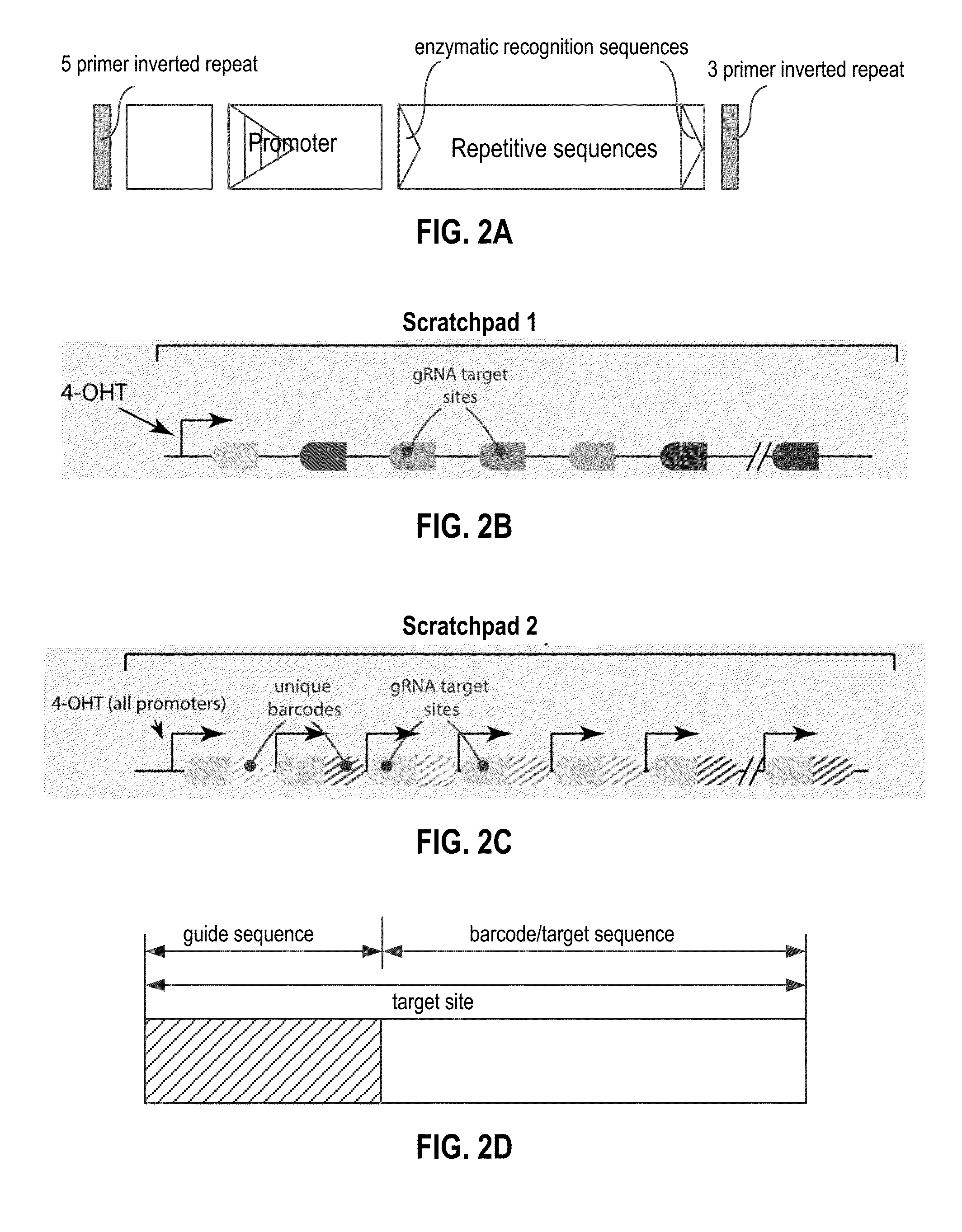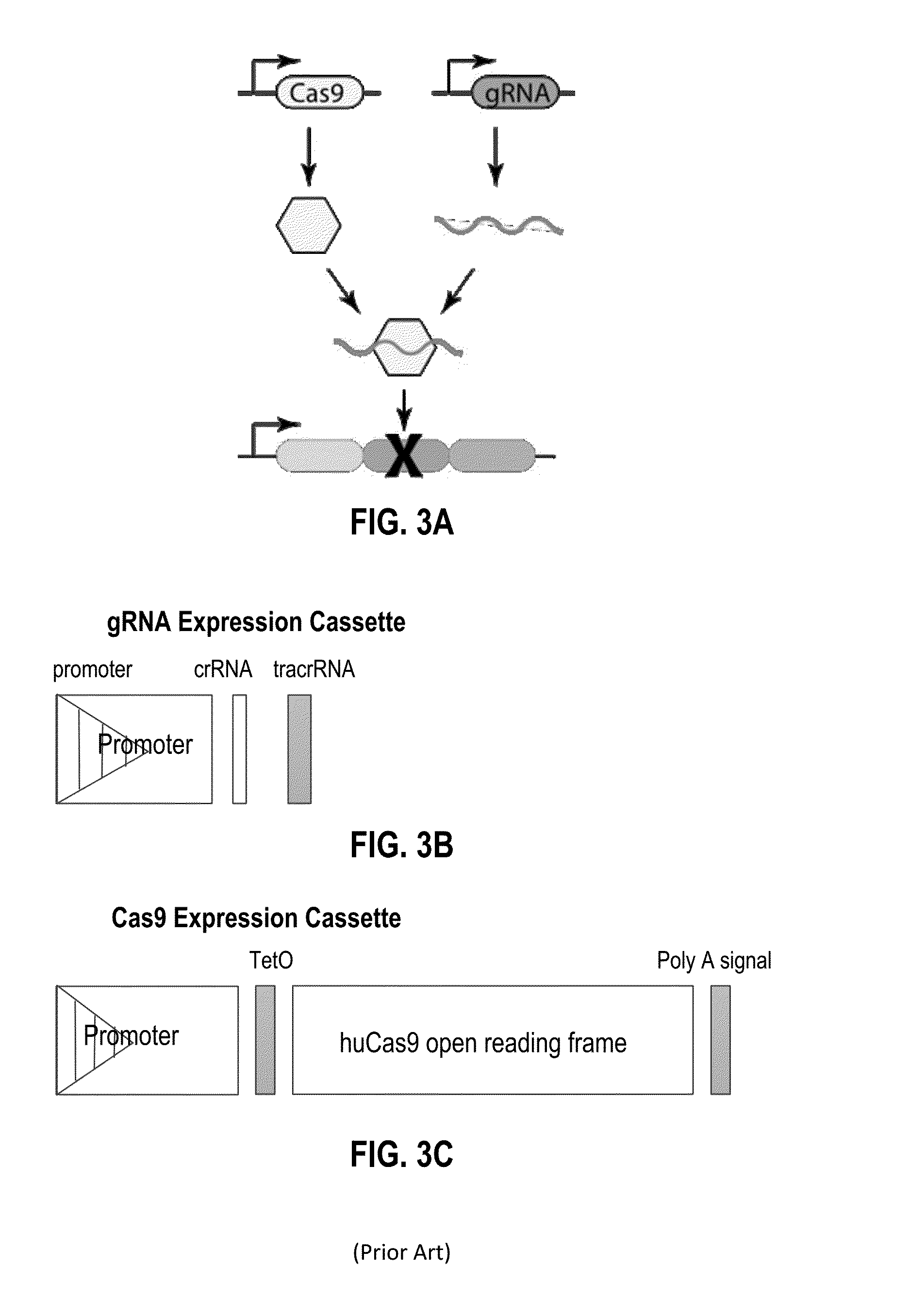Recording and mapping lineage information and molecular events in individual cells
a technology of molecular events and lineage information, applied in the field of individual cell lineage information and molecular events recording and mapping, can solve the problems of inability to follow multiple lineage decisions or reconstruct an entire tree, systemic techniques that can produce such comprehensive maps in more complex organisms are lacking, and existing lineage determination approaches have severe limitations
- Summary
- Abstract
- Description
- Claims
- Application Information
AI Technical Summary
Benefits of technology
Problems solved by technology
Method used
Image
Examples
example 1
CRISPR System Deletes Portions of Genetic Scratchpads
[0193]FIGS. 8A and 8B demonstrate that the CRISPR system can write on a genetic scratchpad and results in deletions of portions of sequences of the scratchpad.
[0194]FIG. 8A shows the result of bulk PCR of scratchpad in mammalian cells. Scratchpad remains intact in the absence of both gRNA and Cas9, but can be deleted when Cas9 and gRNA are both expressed. A band representing cut scratchpads is clearly visible when both gRNA and Cas9 are present, but absent when either component is missing.
[0195]FIG. 8B shows the results of individual yeast clones analysis. Here, efficient removal by the CRISPR system of most repeats of a repetitive scratchpad core is clearly observed, as indicated by multiple bands corresponding to loss of repetitive sequences from a scratchpad core. This writing approach is applicable in many organisms, including mammalian and yeast cells.
example 2
Tuning of CRISPR System
[0196]This example illustrates that the cutting efficiency of Cas9 protein in the CRISPR system can be adjusted. As part of this system, Cas9 activity can be tuned through a variety of promoters, mutations, and accessory peptide fusions.
[0197]Guide RNAs can also be tuned through the use of mismatched gRNA sequences (FIG. 9), the presence of decoy gRNA, gRNA copy number control, gRNA expression from inducible promoters, and gRNA expression from atypical geometries, such as from introns. Writing can also be achieved via other systems that can alter the DNA scratchpad, including recombinase and integrase enzymes.
[0198]As shown in FIG. 9, mismatched gRNAs are one way to tune the rate of scratchpad cutting with the CRISPR system. Mismatched gRNA are not fully complementary to their target site and alter the efficiency of scratchpad cutting. gRNA less complementary to their scratchpad target show reduced (or no) cutting efficiency via bulk PCR.
example 3
In Situ Characterization of Scratchpad and Mutation Status
[0199]Our method is ideal for in situ readout of events from individual cells or tissues. By using RNA FISH, we are able to visualize changes in the transcribed DNA that result from our multiple recorded events.
[0200]One implementation of this involves transcription of scratchpads from their promoters and subsequent labeling of these nascent transcripts via RNA FISH. The presence or absence (if deletion occurred) of each scratchpad as well as its uniquely identifying downstream barcode region (FIGS. 10 and 11) were visualized.
[0201]FIGS. 10A and 10B show scratchpads visualized by FISH in single cells. In FIG. 9A, a colony of mouse embryonic stem cells (red nuclei) that grew from a single cell show RNA FISH images of the scratchpad transcript (blue; seen here as one large dot). In FIG. 9B, yeast cells (blue nuclei) also show scratchpad transcripts (pink) by FISH.
[0202]FIGS. 11A and 11B illustrate scratchpad deletion observed b...
PUM
| Property | Measurement | Unit |
|---|---|---|
| time | aaaaa | aaaaa |
| length | aaaaa | aaaaa |
| fluorescence imaging | aaaaa | aaaaa |
Abstract
Description
Claims
Application Information
 Login to View More
Login to View More - R&D
- Intellectual Property
- Life Sciences
- Materials
- Tech Scout
- Unparalleled Data Quality
- Higher Quality Content
- 60% Fewer Hallucinations
Browse by: Latest US Patents, China's latest patents, Technical Efficacy Thesaurus, Application Domain, Technology Topic, Popular Technical Reports.
© 2025 PatSnap. All rights reserved.Legal|Privacy policy|Modern Slavery Act Transparency Statement|Sitemap|About US| Contact US: help@patsnap.com



